A Song of Polenta and Pizza: The North-South Divide in Italy
Is it deep ancestry, or is it recent selection?
It’s no secret that Southern Italy diverges from the North in many ways, and usually for the worse. It has a lower GDP per Capita, it had high birth rates for longer and is today younger than the North, but no longer has unilaterally higher fertility rates. It has far more political corruption, thanks to the continued presence of the Mafia, and more crime than the North. Unemployment is much higher than the North. Southern Italians are shorter than Northern Italians, and have somewhat darker features. The South is politically very devoted to the populist Five-Star party, and historically was very pro-Monarchy. If you pick an eminent Italian from a hat, there is a very low chance that he is of Southern origin. Southern Italians were more innumerate and illiterate than Northerners during the late 19th century. Southern Italians have almost two-thirds of a standard deviation lower IQs than Northern Italians, according to Richard Lynn’s research, but his work on Southern Italy has been heavily scrutinized in the following years. Many scholars deny that the differences in standardized test scores are actually a product of general intelligence differences. There is likely some innate intelligence difference though, as Southern Italians have slightly lower polygenic scores for educational attainment than Northern Italians:
Aside from this, the most brought-up point about the divide in Italy is the genetic divide. Northern and Southern Italians are, all things considered, fairly genetically close, but still quite distinct. Southern Italians are clearly pulled towards the Middle East, which invigorates all-too-common rumors about “moorish” ancestry. The aforementioned Lynn study also suggests this as a possible cause of less Southern Italian innovation and eminence compared to the north. But how true is this really?
Some academics suggest that the North-South divide began around the Risorgimento. Certainly, the trend grew as time went on. Italian industry became more focused around the north as time went on, and GDP per Capita difference between Northern and Southern Italy increased drastically in the centuries following reunification.
Before this point, the economic differences between the North and South were less extreme, but this is also just because economic growth tends to lead to more inequality historically. The North and South were both growing, the North was just growing faster.
Nonetheless, the gap clearly predates the unification to some extent, based on the sheer difference in significant figures. It’s worth considering, Northern Italy has always been more populous than the South. Or at least, since the collapse of Greek rule in the South. Most of Italy’s big cities are in the North, and the fertile Po Valley is more capable of hosting people than the rocky Apennine-dominated inland of the South.
Furthermore, Southern Italy just isn’t that big in the first place. Today, only a third of Italy’s population lives in the South, which is consistent with historical patterns. Southern Italy experienced a stagnant population from the late 16th century to the mid 18th century, while Northern Italy kept growing.
There’s this old theory that the reason Europe was historically a “barbarian” continent, but became the chief continent because Europe has a lot of fertile land, while early centers of civilization had small pockets of very fertile land such as river-valleys and small coastal plains cordoned off by mountain or desert. While the theory definitely has its flaws, I think it is reflected a lot in Italy. The Greeks settled heavily in Southern Italy, a land which like their own was defined by mountains which contained within them small fertile plains, protected from foreign invaders but forced into a small area. More open areas of Greece like Thessaly were less urbanized. Most of the Greek colonies were around the Apennine Mountains and in Sicily, with considerably less Greek presence in the Illyrian-occupied Apulia. Etruro-Latin civilization was similarly protected by the Apennines, and the many elevations within Tuscany, but the most fertile region of Italy (the Po Valley) was occupied by less urban groups such as the Gauls and Ligures. There was simply no reason to build cities in such an environment while the population was low, there was plenty of living space so to speak.
However, as the population expanded, and as the amount of land human beings could control expanded, these large fertile regions became much more valuable and much more conducive to population growth. In Italy, this meant that influence shifted from the Greek south to the Gallo-Roman North over time. Syracuse was the largest (and perhaps most innovative) city in the world at the same time that Emilia-Romagna was being picked at by Gauls, Etruscans, and Rhaetians. To their credit, the Gauls were a much more urbanized and developed population than they are given credit for. Gallic cities were often very large and well-fortified. Read Julius Caesar’s description of Avaricum for more on that.
Before I continue, I think it is about damn time I brought back a proper Boob Break. The haters are gonna hate, but I know the silent majority has always supported them and understood them as a time-honored tradition.
Anyways… I believe that this is the beginning of genetic differentiation among Italians. I must clarify, the debate over Italian ethnogenesis is necessarily incomplete, as we don’t have DNA representative of all of the major ethnic groups of Iron Age Italy. Most importantly, of Cisalpine Gauls. It is possible that Northern Italians today are genetically similar to, and descended from, these Gauls, just as the French are descended from Transalpine Gauls. It is also possible that this is not the case, that said Gauls were genetically similar to Transalpine Gauls, and Northern Italians today are descended from Etruscan and Roman colonists. Either way, there still exists the problem of Central and North-Central Italy, which were never occupied by Gauls and only had a very minor Germanic population. Presumably, these people descend mostly from Iron Age Italic tribes. Meanwhile, in Southern Italy, the Greeks created most of the major cities. If not the Greeks, it was the Punics, who were probably mostly descended from Greek and Italian merchants themselves (based on genetic samples from Kerkouane and Carthage), and not much actual Phoenician Levantine ancestry.
Both the Greeks and the native populations of Sicily already had some ancestry from Bronze Age Anatolia, and were less steppe-rich than the Italic tribes to the north. It may have come from Minoan colonies or Hittite trade ports across the Mediterranean. Today, Southern Italians remain among the most genetically similar populations to ancient Greeks.
But I think it would be quite a leap of faith to view this as the cause of Southern Italy’s problems, considering that the Ancient Greeks were obviously one of the most eminent peoples to ever exist on this earth. Polygenic scores for IQ calculated by
and Davide Piffer also suggest that Mycenaean Greeks were of above-average intelligence, albeit with a lot of room for error. Many great Greek thinkers were Italiote colonists — Pythagoras, Parmenides, Zeno, and of course Archimedes. But it does bring us one step closer to the true history of the North-South divide.During the Roman period, both Greek and Roman urban areas experienced a large genetic shift in the direction of Anatolia. The genetic profile of Imperial Rome was strikingly similar to that of Imperial Anatolia and Greece, and resembled a somewhat Hellenized Anatolian population. It is unclear just how much this profile penetrated the interior of Italy. It is possible that it was mostly prevalent in Roman cities, and less prevalent in the countryside, but it’s hardly a novel discovery. What happened in mainland Greece is even cloudier. One would assume that Greece was transformed before Rome, because it was integrated into the eastern world immediately after Alexander’s conquests, but there is a dearth of samples from mainland Hellenistic Greece and Rome alike. Both cultures practiced cremation. Archaeologists and historians were aware of the Hellenification of Rome prior to genetic evidence, based on the rise in Greek tombstones around Rome, and the records by Roman citizens on the sheer number of people coming from outside of Italy, mostly from the Greek-speaking world.
There are two main factors which probably contributed to the relative retention of the southern profile in the South as opposed to the North, but even in the South there was a resurgence in “northerly” ancestry to some extent. Firstly, when the Romans conquered Southern Italy, the land was mostly dulled out to wealthy gentlemen who operated Latifundia — plantations, basically. Roman agriculture was heavily reliant on Slavery. Around 1/5 of the Italian population was comprised of slaves, and the primary foreign source of Roman slaves was from the Greek east, where the Romans fought many wars with the Diadochi. According to Strabo, the Roman victories at Corinth and Carthage, as well as the ongoing disintegration of the Seleucid Empire, provided Romans with the money for Slaves, and a large market of Slaves from the politically unstable Hellenized East. Meanwhile, Northern Italian land would mostly be dulled out to smaller farmers and military veterans, who turned into a class of free peasants and mostly relied on their own labor. During the decline of the Roman Empire, the urban population declined drastically. It’s something few today can really imagine. Plagues, food insecurities, social unrest, and eventually foreign invasions and raids devastated the cities, which already had to be constantly replenished by the countryside in the pre-modern era. In Northern Italy, this meant that those who survived were the peasant farmers who operated agriculture. In the South, there was a stronger foreign element in the countryside, even if it came from the lowest rung.
It’s not just slaves, though. Southern Italy was part of the Greek world first, and the Roman world second. Plenty of powerful families which established civilization in the South were Greeks, and continued to mingle with the Greek world. Greeks were very wealthy in their own provinces. So, it is likely that even the owners of latifundium were disproportionately of Greek ancestry. Greek aristocrats were known to hold power in the Roman Balkans as well. After the collapse of the West, the Greek south still held many ties to the extant and predominantly Greek Eastern Roman Empire. After the Lombards ruined Justinian’s project for restoration of the Empire, the Byzantines held on to Southern Italy for centuries. Sicily was taken by the Moors eventually, but Moorish and Christian communities were very segregated from each other, and the Moors did not create the modern Southern Italian genetic profile as it already existed prior to their invasion. The Moors were a local elite that failed to convert the locals (unlike in Iberia) and ruled for a far shorter time period than in Iberia, so I don’t know why people have this ridiculous belief that Sicilians are Moors or Arabs. The Greeks continued to control much of Apulia and Calabria for longer, and held on to Naples the longest, only losing it in the 12th century. Just as the shift in the Roman genome has been linked primarily to Anatolia, the ethnogenesis of Southern Italians has also been seen as a product of admixture from Anatolian-IA or Minoan sources.
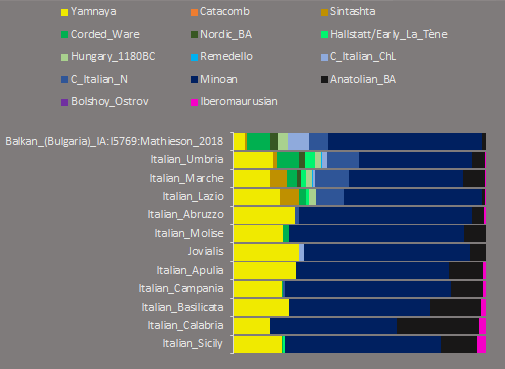
What is more plausible is to say that Southern Italians continued to have gene flow with Greeks, who still had that old Imperial genetic profile in Anatolia and many of the Islands. While Italiotes still exist in a few parts of Southern Italy, many people underestimate how much of Southern Italy spoke Greek into the early modern period.
"At the end of the twelfth century ... While in Apulia Greeks were in a majority and indeed present in any numbers at all – only in the Salento peninsula in the extreme south, at the time of the conquest, they had an overwhelming preponderance in Lucaina and central and southern Calabria, as well as comprising anything up to a third of the population of Sicily, concentrated especially in the north-east of the island, the Val Demone.” —The Latin Church in Norman Italy, by Graham Loud
Travelers from Western Europe mention that in many parts of Calabria the locals only spoke Greek. Greeks visiting well after the collapse of the Byzantine Empire noted the amount of their countrymen, and that some claimed descent from specific ancient Greek cities and tribes. Petrarch advised his peers to go to Southern Italy if they wanted to get better at speaking Greek.
Pivoting back to the IQ debate, it is more reasonable to claim that the intelligence gap is of ancestral origin when you simply consider that Southern Italians are a predominantly Greek population. After all, the modern country of Greece has an average IQ of 93. Polygenic scores for intelligence and educational attainment declined in the Imperial period of Italy, but whether this was due to between-group dysgenics or within-group dysgenics isn’t entirely clear. Rome had its own sort of birth rate crisis among its upper class, meaning that the poor reproduced faster than the affluent. Joseph Bronski has also suggested that the Romans were suffering from Mutational Load. “Suffering from Success”, so to speak. Too many kids surviving and reproducing who were supposed to die in their infancy.
However, I don’t think that ancestral components are the primary reason for the Italian North-South divide. There are other factors whose influence, combined with maybe some degree of ancestral influence, offer a more parsimonious explanation. Firstly, there is the question of inbreeding.
Cousin marriage is historically uncommon in Europe, but for a time became very fashionable in Southern Italy. It was especially bad in Sicily and Calabria, the two most mafia-poisoned provinces in Italy, and was comparable to the rates of the Islamic world.
In the modern day, inbreeding has almost completely died down in the South, it doesn’t exceed 8% even in the most extreme areas, but it is still far more prevalent in the South, and particularly Sicily and Calabria.
I have seen some try to claim that this is a product of greater Catholic influence in the North, but this is unlikely. For one, the very source they are citing which records high cousin marriage in Southern Italy also finds that cousin marriage arose in Italy relatively recently:
“Our data indicates that there was a slow increase of consanguinity in Italy beginning with the first part of the nineteenth century. It was followed by a higher rate of increase toward the end of the century, until a peak was reached in most parts of Italy in the period between 1918 and 1925. The frequency peak was highest in the south and less pronounced in the north. A fast descent began after the peak, with downslopes greater in the north.
The phase of increase may have been due in part to the desire to keep family land together, since there is some coincidence between the beginning of the slow increase of consanguinity with laws against primogeniture promulgated in France by Napoleon and rapidly spreading to most of Europe. But the later and stronger increase is more probably due in greater part to the increased rate of population increment (the demographic transition), which manifested itself, in Italy, with very different patterns in different parts of the country.”
—Consanguinity, Inbreeding, and Genetic Drift in Italy, Luigi Cavalli-Sforza
Southern Italy traditionally followed the nuclear family structure actually, while Central Italy — the very region known for fostering the humanist spirit of the renaissance — was clannish. The only part of Europe which practiced endogamous family structure was Sardignia. Sardinia probably is somewhat inbred, especially due to the genetic bottleneck they have undergone, but they do not have significant ancestry from Greeks or Bronze Age Anatolia like Southern Italians proper do. And yet, Sardinia is often included in the collection of Italian regions that lag socio-economically.
The second alternative cause for the Southern Italian lag is emigration, both within and outside of Italy. Northern and Central Italy offered much more opportunity to skilled workers, and gave the Burghers a great deal of political power. Northern and Central Italy at this time was the most literate and numerate society on earth, and went through a period of urban growth that left it with 1/4 of Europe's urban population. Southern Italy was also relatively urban compared to the rest of Europe, but less so than North and Central Italy.
“Although it is hard to compare the North and the South, we nevertheless know that in 1300 the urbanisation rate was already higher in the Centre- North than in the South and the Islands (21.4 against 18.6 per cent). Three cities (Florence, Venice, and Milan), forming a triangle in northern and central Italy, were the dominant nodes, surrounded by many smaller centres: 97 centres exceeded 5,000, 26 10,000, and 13 15,000 inhabitants. While, for 1300, the average European urbanisation rate is estimated at around 10 per cent of the population, in Tuscany a level of 27 per cent was attained. At the time, Tuscany was the most urbanised area in Europe.”
Furthermore, Southern Italy was under French, Spanish, and Austrian rule from 1442 to 1816. It had technically already been under the control of French and Norman aristocrats before then, albeit, but the center of political power in the Two Sicilies being across the ocean didn’t help with fostering a local educated elite.
Both of these, however, are relatively minor compared to the massive Italian emigration waves of the late 18th and early 19th century. Although emigration occurred throughout Italy, Northern Italians were mostly moving to neighboring countries, especially France. Immigration to the Americas was more selective, as it was much more of a risk and required more money. A large amount of Italian immigrants to the United States ended up returning to Italy, usually people who had not found success in America. Although many Italians came to the US intending to leave, many of them actually stayed, which probably had to do with how successful they were in the new world. In most years, 1/3 to 1/2 of immigrants who came to America would return to their home countries. Meanwhile, those who stayed in America were more likely than native Americans to work in high-paying labor. Albeit, part of this was due to immigrants being more urban on average.
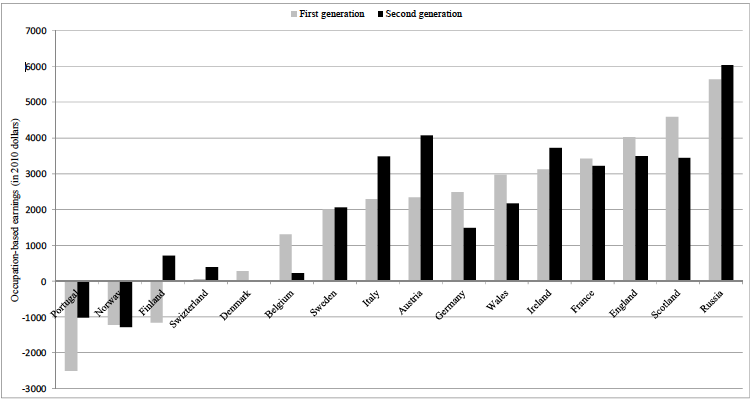
In the modern day, Italian-Americans are among the wealthier and more educated ethnic groups in the country, despite being of mostly Southern origins. Argentine Italians are also mostly of Southern Italian ancestry, despite common misconceptions. It is much less of an overwhelming majority than in America. I don’t think brain drain in Southern Italy can explain the entire IQ gap, if the IQ gap is so large in the first place, but you can see the way human capital flight can destroy an area’s prospects in other countries. Appalachia comes to mind for myself.
Between 1875 and 1930, around 4 million Southern Italians immigrated to the United states, comprising 80% of total Italian immigration to America. The population of Southern Italy during this time was initially 10 million, and grew to almost 15 million, so this is a pretty substantial number of people relative to total population size.
Alright, this is getting long enough… I make it no secret, I’m a bit of an Italiboo. I only have very minor Italian ancestry, and I don’t even know where it is from exactly. Maybe part of me doesn’t want to find out. I am usually the first person in the room to say “Southern Italians are White people”. I don’t think Southern Italians are that distinct from Northern Italians, they are both products of the same groups in different amounts. I don’t believe in the notion that Northern Italians are Germanicized Southrons, or even that Southern Italians are Orientalized Latins. However, I do understand the grievances of the Padanians. Mezzogiorno is Italy’s problem child. Massive amounts of taxpayer money are funelled into the pockets of corrupt politicians and murderous gangsters in the South, while Southerners do not provide much in return to the North, save certain agricultural products which cannot be grown in the more temperate climate. If Northern Italy separated, it would instantly become one of the wealthiest countries in the world, but it would come at a cost. Italy would no longer have the population, landmass, and strategic position that it does today, a situation which makes it one of the strongest militaries in Europe. North-Central Italy also has a faster aging population than Southern Italy, and it is likely that losing the South would give much more power to the Italian Left, which dominates Central Italy. These people will bring migrants to Italy who are certainly much more pestilent than the Terrone… Despite the mafia activity, Italy is one of the lowest-crime areas in the world and Southern Italy is very low in violent crime by American standards. Mostly because Italy in general is old, ethnically homogenous, and consumes less alcohol than Northern Europe. But this would change if they imported one billion Bomalians.
Although there are ancestral differences in Italy, Italians are genetically very close to each other across the board and need not consider Italy an ethnically divided peninsula. Yes, Southern Italians clearly have a great deal of Greek ancestry, and a smaller amount of further ancestry from Anatolia and North Mesopotamia, but they still probably have a significant amount of ancestry from the ancient Italic tribes and even more likely from the autochthonous peoples of Sicily. The Lombards and Normans weren’t large in number, but they did bring with them large populations of Gallo-Italic speakers from the North, which is why you will still find small towns in the South that speak Northern dialects. Italy should not only be united but it should be given back the territories which were wrongfully stolen from it such as the Dodecanese Islands, Istria, and Dalmatia. You know what? While we’re at it, give Crete back too. It was Venetian before it was Turkish, so why exactly did the Greeks get it in the end?
If I am fortunate enough to see Italy again, I would like to go to Sicily. I like Cannoli, it’s one of my favorite deserts. I like the Norman and Avignon Gothic influences in Southern Italy, but many people overfixate on the Norman period and do not realize that most of the beautiful architecture in the area is actually Spanish. But I’m not going to call Capicola “gabagool”. That sounds stupid. And I’m not gonna call Calamari “galamar”. And it is Mozzarela, not “Muzzarele”.
This post is in dedicated in honor of FatGreasyItalian. He was a great man, a great son of Mars. He was funny and he was a sage. I don’t know where he is now, but I miss him and wish him the best.




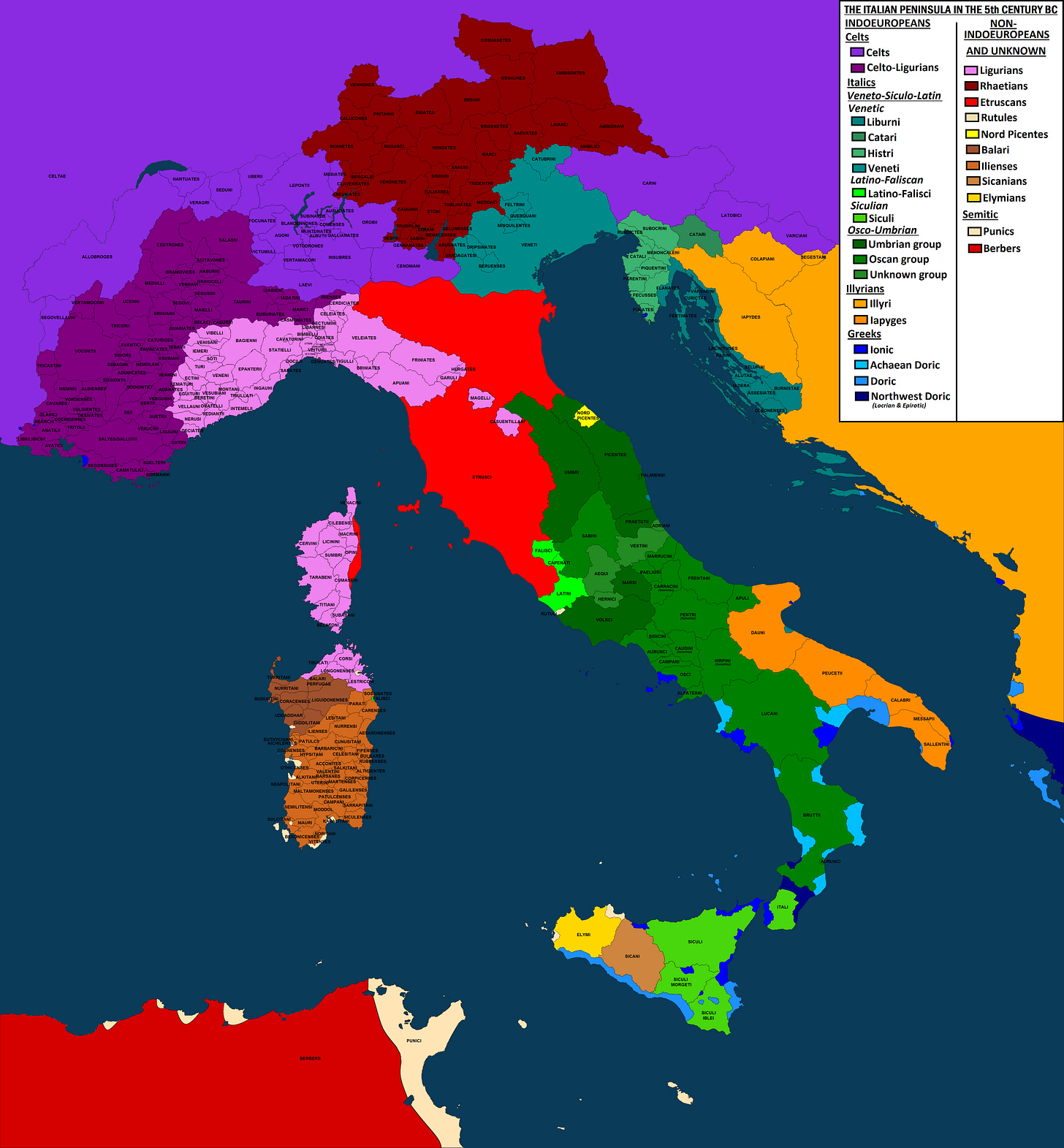


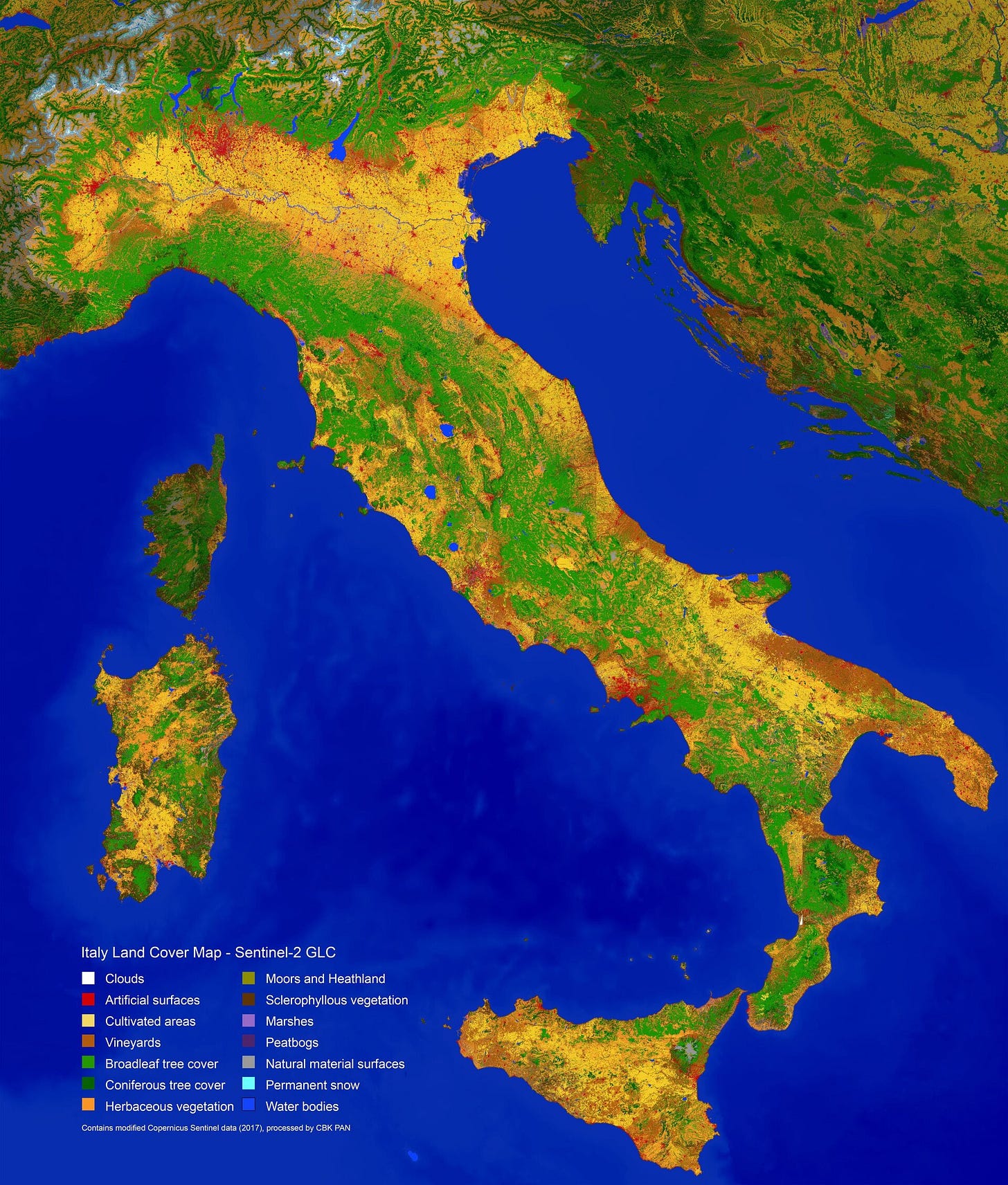
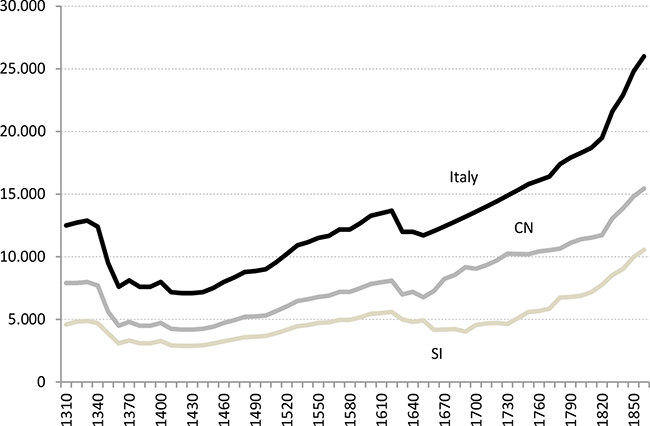


![First Cousin Marriages in Italy, by percentage, 1930-1964 [484 x 472] : r/MapPorn First Cousin Marriages in Italy, by percentage, 1930-1964 [484 x 472] : r/MapPorn](https://substackcdn.com/image/fetch/$s_!ZZdK!,w_1456,c_limit,f_auto,q_auto:good,fl_progressive:steep/https%3A%2F%2Fsubstack-post-media.s3.amazonaws.com%2Fpublic%2Fimages%2F68ceab90-00b1-43d6-9ad9-bc388293cf83_484x472.png)
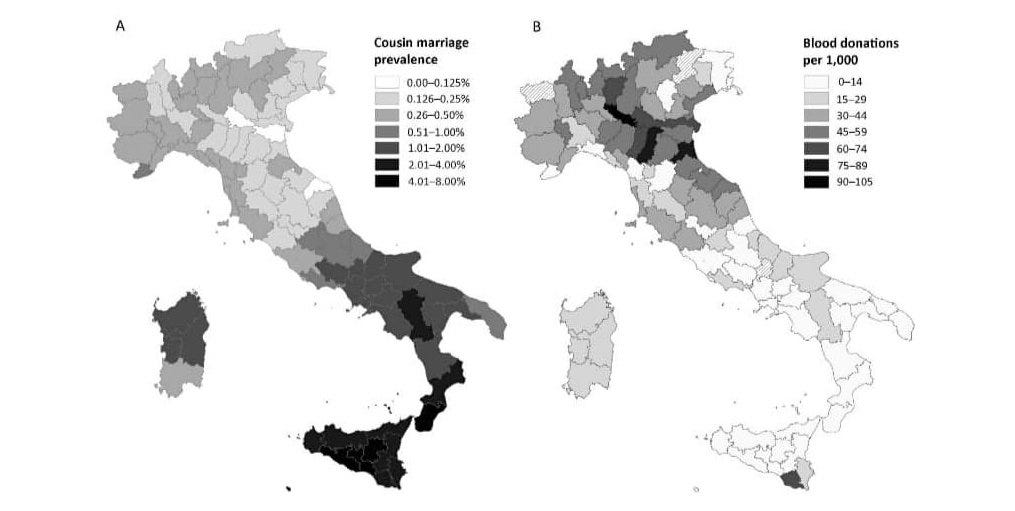

RIP FatGreasyItalian 🤌🤟🌶️ great article
How do Maltese compare to Southern Italians, genetically speaking? Looking at where they're mapped on PCAs, it seems like they are closer to Cypriots and Sephardic Jews than Europeans. But contrarily, I've also seen data that indicates they're only around 25%~ MENA. And gud boob break. Siculo milkers mog the yentas.